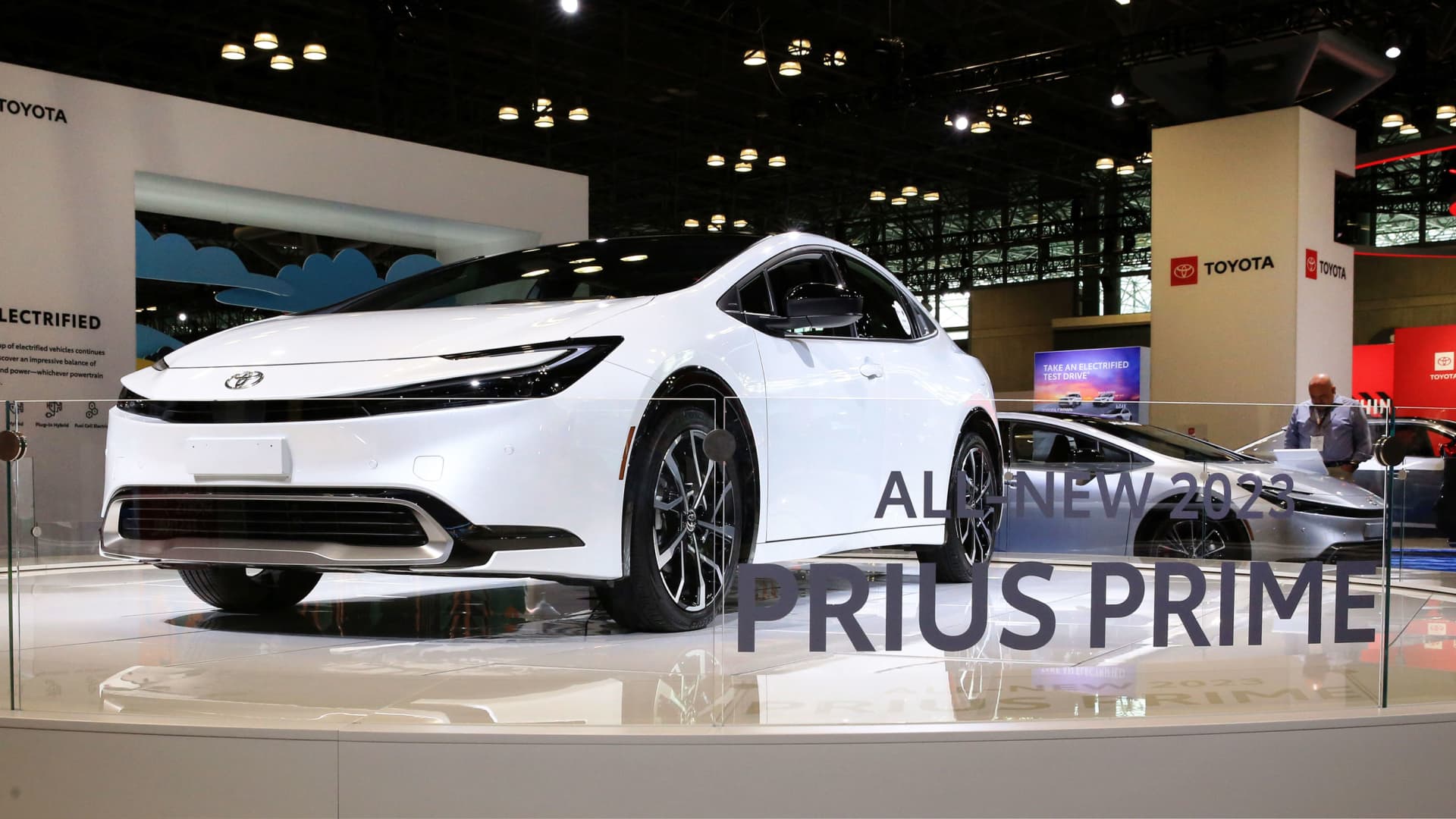2023 Prius Prime on display, April 6, 2023.
Scott Mlyn | CNBC
DETROIT — As sales of all-electric vehicles grow more slowly than expected, major automakers are increasingly meeting their customers in the middle.
More and more companies are reconsidering the viability of hybrid cars and trucks to appease consumer demand and avoid costly penalties related to federal fuel economy and emissions standards.
The shifting strategies run counterintuitively to industrywide EV messaging of recent years. Many auto companies have begun to invest billions of dollars in all-electric vehicles, and the Biden administration has made a push to get more EVs on U.S. roadways as quickly as possible.
But hybrid vehicles — those with traditional internal combustion engines combined with EV battery technologies — could help the automotive industry lower fuel consumption and emissions in the short-term, while easing consumers into vehicle electrification.
Sales of traditional hybrid electric vehicles, or HEVs, such as the Toyota Prius, are outpacing those of all-electric vehicles in 2023, according to Edmunds. HEVs accounted for 8.3% of U.S. car sales, about 1.2 million vehicles sold, through November of this year. That share is up 2.8 percentage points compared with total sales last year.
EVs made up 6.9% of sales heading into December, or roughly 976,560 units, up 1.7 percentage points compared with total sales last year. Sales of plug-in hybrid electric vehicles, or PHEVs, accounted for only 1% of U.S. sales through November.
“There’s been so much talk over the past few years about the move toward electrification and sort of forgoing hybrids, but … hybrids are not dead,” said Jessica Caldwell, Edmunds executive director of insights. “There’s a lot of consumers out there that are interested in electrification, maybe not ready to go fully electric.”
Hybrids can also cost less and relieve many concerns typically associated with EVs such as range anxiety and lack of charging…
Read the full article here

Leave a Reply